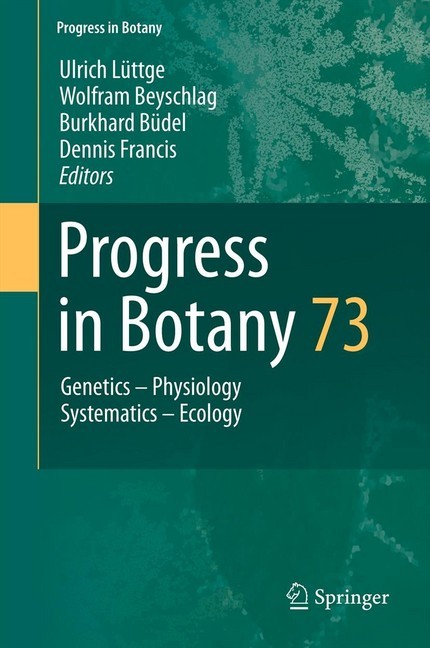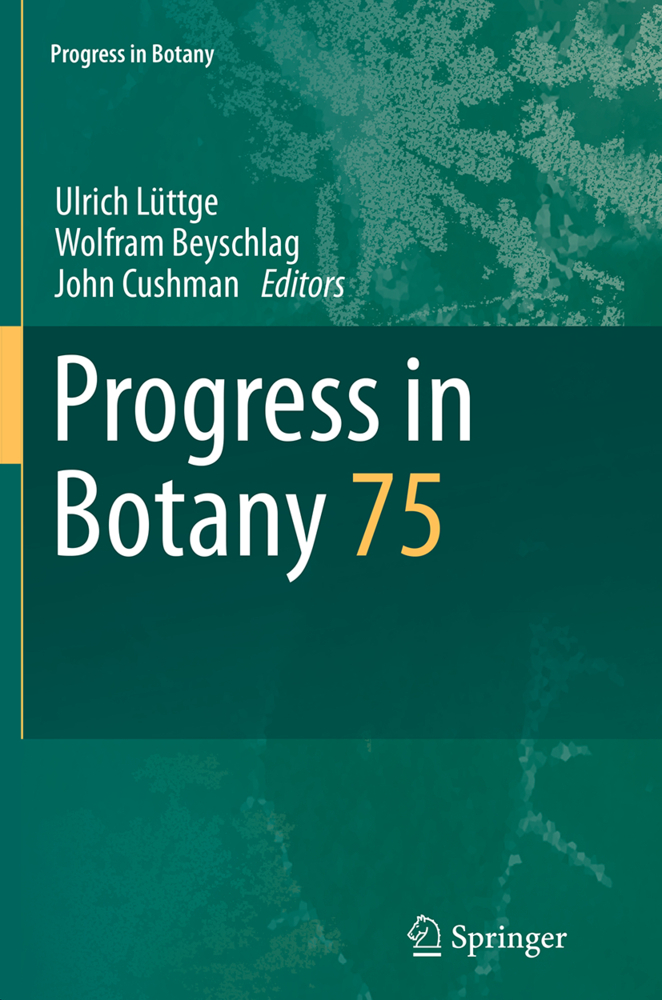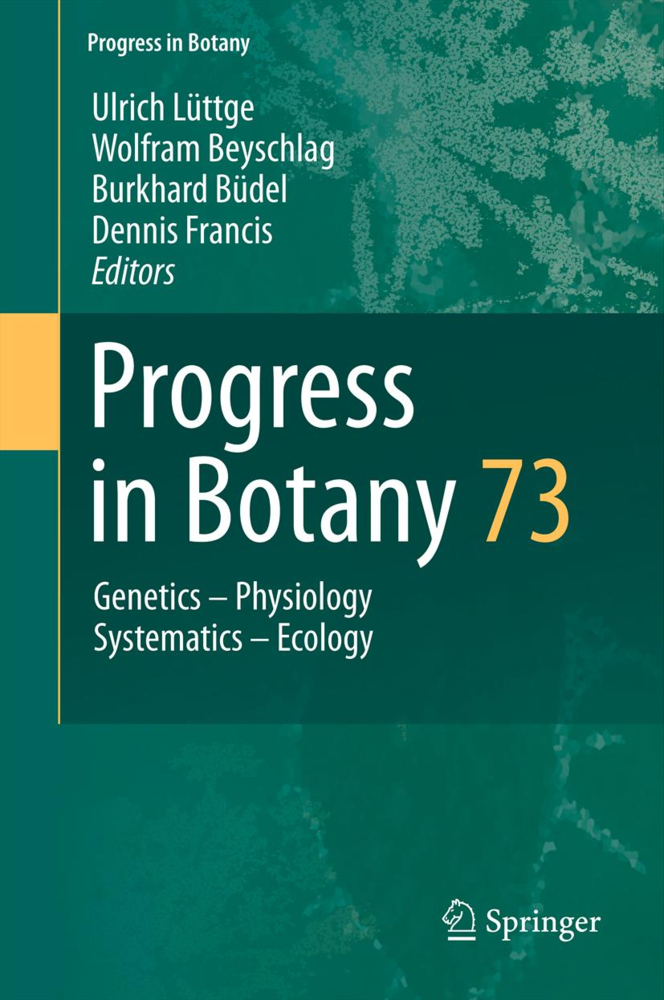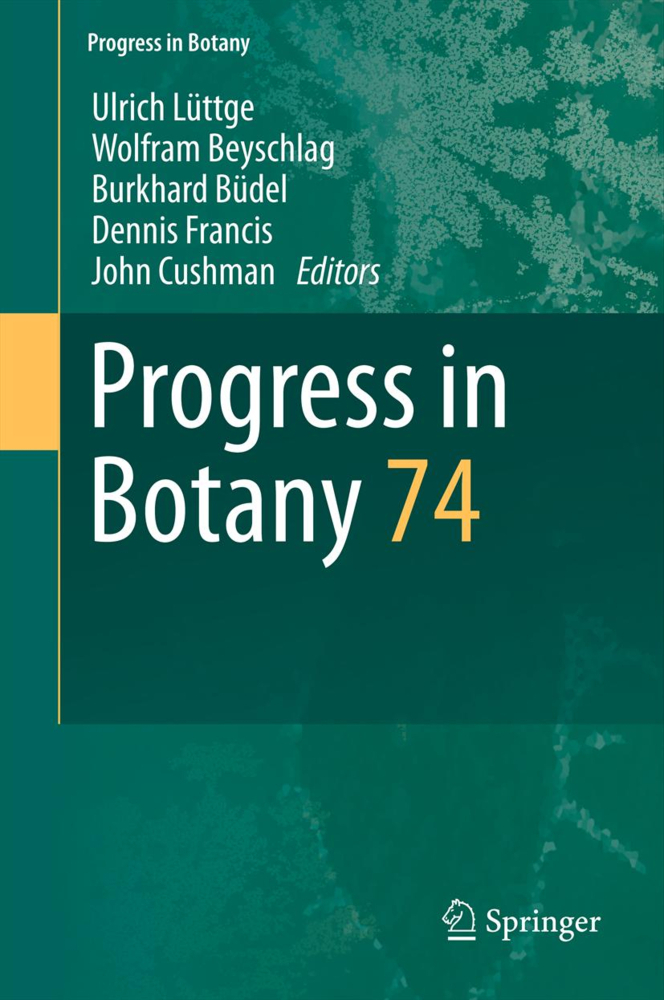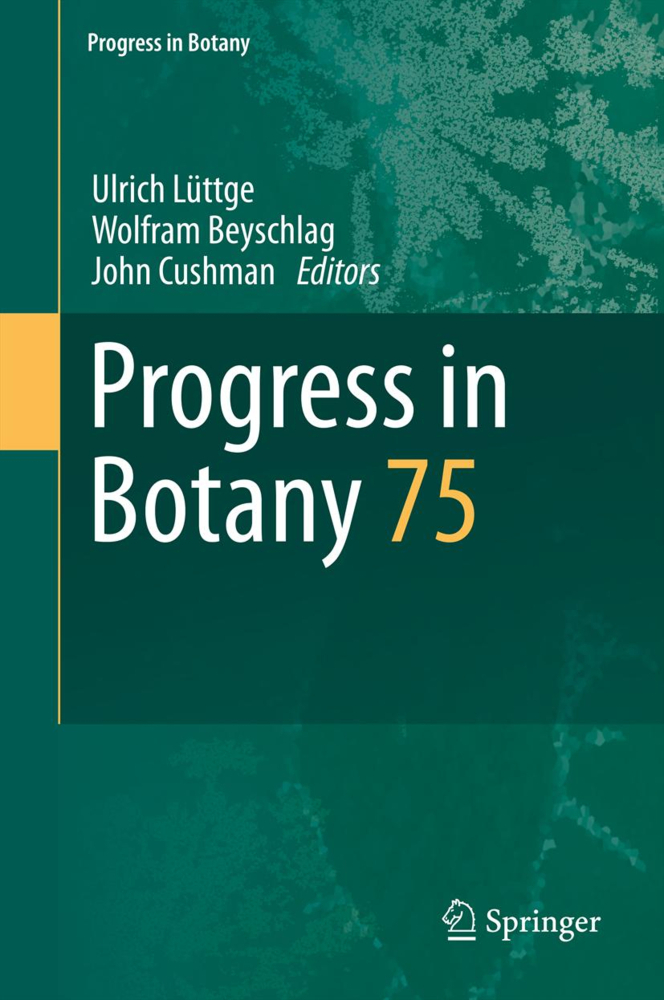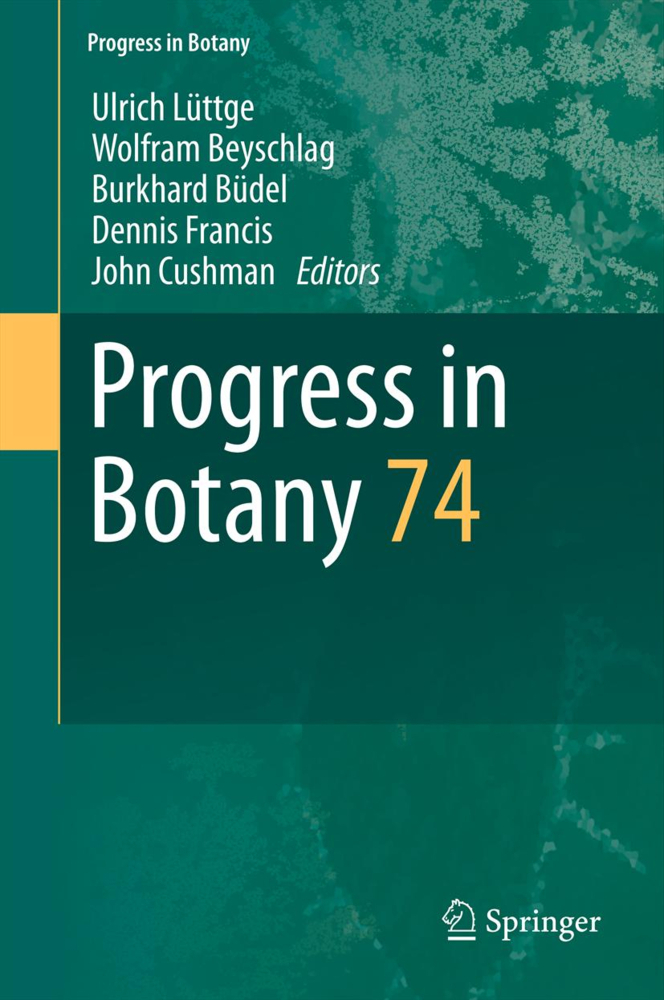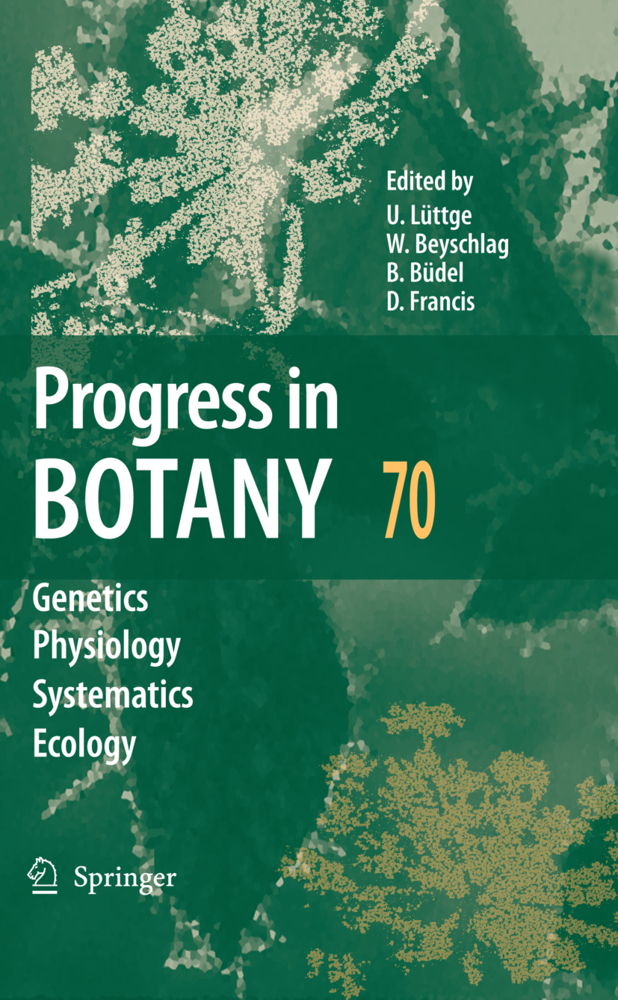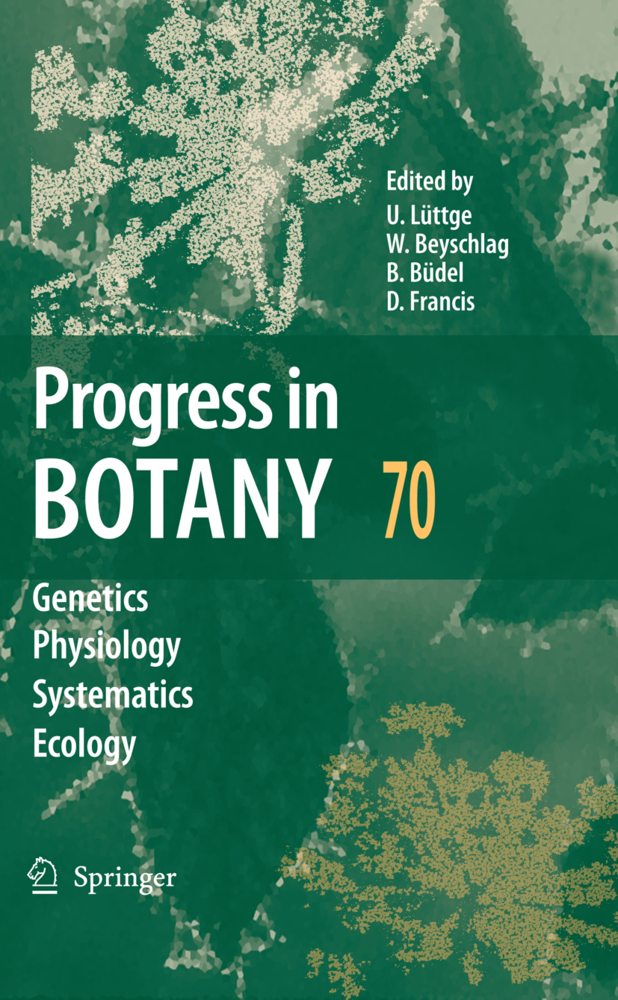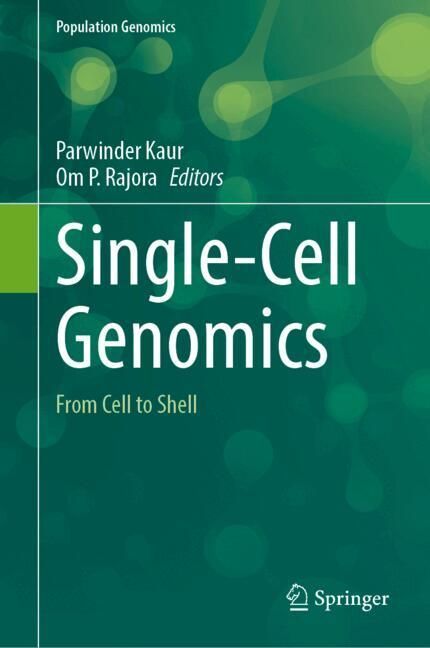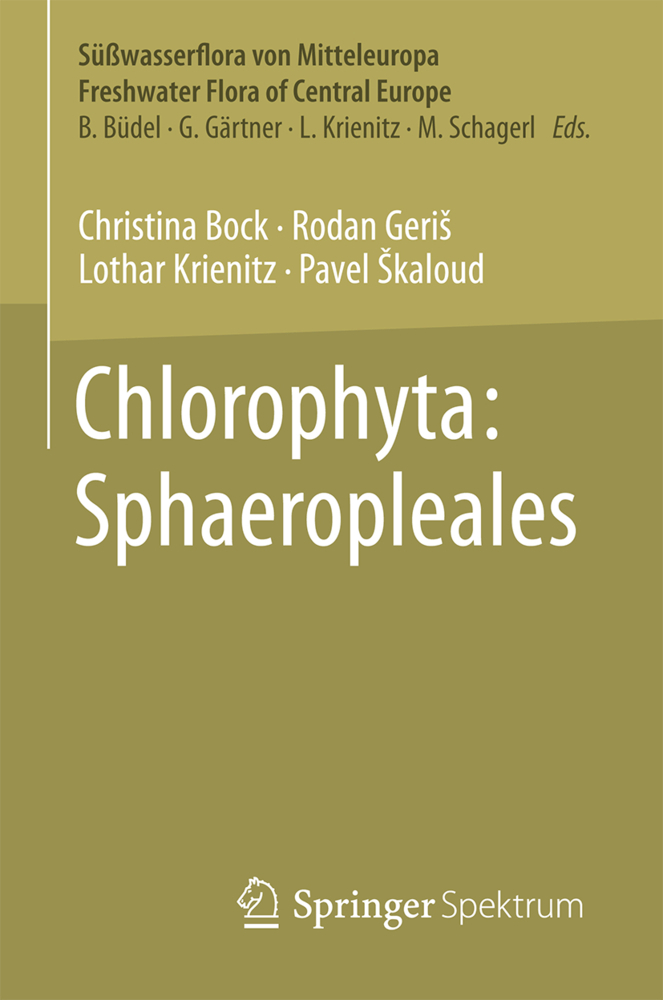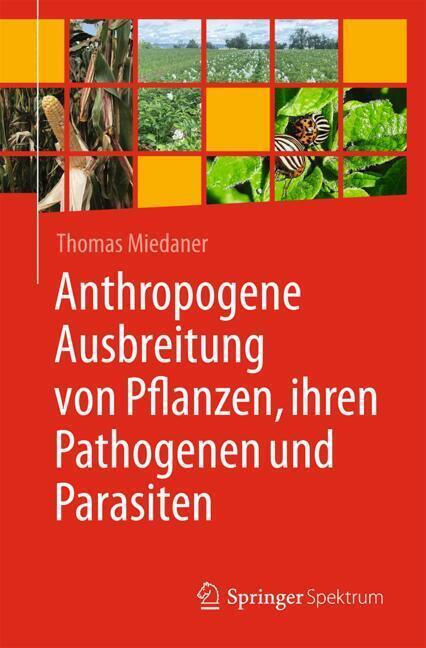With one volume each year, this series keeps scientists and advanced students informed of the latest developments and results in all areas of the plant sciences. The present volume includes reviews on genetics, cell biology, physiology, comparative morphology, systematics, ecology, and vegetation science.
1;Progress in Botany 73;3 1.1;Contents;5 1.2;Contributors;7 1.3;Part I: Review;11 1.3.1;A Half-Century Adventure in the Dynamics of Living Systems;12 1.3.1.1;1 What is Life?;14 1.3.1.2;2 Methods and Methodological Improvements;14 1.3.1.2.1;2.1 Radioactive and Stable Tracers, the NCR and SIMS Techniques;14 1.3.1.2.2;2.2 Ionic Interactions, Ionic Condensation, Microelectrodes;16 1.3.1.2.3;2.3 Practical Applications;16 1.3.1.3;3 Enzyme-catalysed Reactions Under Non-classical conditions;18 1.3.1.3.1;3.1 Brief Reminder of Classical Enzyme Kinetics;18 1.3.1.3.2;3.2 Non-usual Cases of Enzyme Kinetics;19 1.3.1.3.3;3.3 Functioning-Dependent Structures;20 1.3.1.4;4 Fluxes of Solutes Exchanged by Biological Systems;23 1.3.1.4.1;4.1 Fluxes of Solutes Between Macroscopic Aqueous Compartments;23 1.3.1.4.1.1;4.1.1 Fluxes of Solutes Through an Enzyme-Grafted Gel Slab;23 1.3.1.4.1.2;4.1.2 Fluxes of Solutes Through an Isolated Frog Skin;24 1.3.1.4.1.2.1;Ussing´s Flux-Ratio Equation;24 1.3.1.4.1.2.2;Lithium-Induced Electric Oscillations;25 1.3.1.4.2;4.2 Transport of Solutes by Plant Cells;26 1.3.1.4.2.1;4.2.1 Conventional Formulation of Cell Transport;26 1.3.1.4.2.2;4.2.2 Flow/Force Formulation of Cell Transports;27 1.3.1.4.2.2.1;Principle of the Flow/Force Formulation;27 1.3.1.4.2.2.2;Arrhenius Plot: Significance of a Variation of Conductance;28 1.3.1.4.2.2.3;Active Versus Passive Transports: Use of the Flux-Ratio Equation;28 1.3.1.4.2.2.4;Active Versus Passive Transports: Use of the Symmetry-Criterion;30 1.3.1.4.2.3;4.2.3 Examples of Application of the Flow/Force Formulation;31 1.3.1.5;5 Plant Sensitivity to Stimuli;33 1.3.1.5.1;5.1 Immediate and Local Responses in Separated Tissues or Cells;34 1.3.1.5.1.1;5.1.1 Ageing of Foliar Discs;34 1.3.1.5.1.2;5.1.2 Gas-Shock in Suspension Cultures of Acer Cells;34 1.3.1.5.2;5.2 Migration, Storage and Recall of Information in Entire Plants;35 1.3.1.5.2.1;5.2.1 Inhibition of Hypocotyl Elongation in Bidens Seedlings;35 1.3.1.5.2.2;5.2.2 Breaking the Symmetry of Bud Growth in Bidens Seedlings;36 1.3.1.5.2.2.1;Asymmetry-Index, g, of a Set of Bidens Seedlings;36 1.3.1.5.2.2.2;STO and RCL Functions in the Control of Bud Growth;37 1.3.1.5.2.2.3;Mechanisms Involved in the Control of Bud Growth;39 1.3.1.5.2.3;5.2.3 Induction of Meristems in the Hypocotyl of Flax Seedlings;40 1.3.1.6;6 Reflection and Speculations;42 1.3.1.6.1;6.1 Methodological and Conceptual Implications;42 1.3.1.6.1.1;6.1.1 Use of Stable Versus Radioactive Isotopes;42 1.3.1.6.1.2;6.1.2 Molecular and Macroscopic Parameters of Cell Transport;42 1.3.1.6.1.3;6.1.3 Increasing Instead of Decreasing a System Complexity;43 1.3.1.6.2;6.2 Physiological Considerations;43 1.3.1.6.2.1;6.2.1 Biological Processes in Organised Media;43 1.3.1.6.2.2;6.2.2 Protein/Protein Interactions and Regulatory Properties;44 1.3.1.6.2.3;6.2.3 Lithium-Sensitive Responses to Wounds and Stresses;45 1.3.1.6.2.4;6.2.4 Memorization of Information in Plants;45 1.3.1.7;7 Back to the Initial Question About Life;47 1.3.1.8;Appendix;51 1.3.1.9;References;60 1.4;Part II: Genetics;63 1.4.1;To Divide and to Rule; Regulating Cell Division in Roots During Post-embryonic Growth64 1.4.1.1;1 Introduction;65 1.4.1.2;2 The Cell Cycle in Roots and the Core Components;65 1.4.1.3;3 Size Control of the Proximal Root Apical Meristem and the Mitotic Cell Cycle;70 1.4.1.4;4 Maintaining the Stem Cell Population in the Distal Meristem and the Procambium; CLE Loops72 1.4.1.4.1;4.1 Post-embryonic Formative Divisions in the RAM;74 1.4.1.4.2;4.2 Environmental Signaling in the Root Apex via Redox Homeostasis;75 1.4.1.5;5 Cell Proliferation Outside the Root Apex: Reactivation of the Pericycle;78 1.4.1.6;6 Conclusion and Perspective;79 1.4.1.7;References;79 1.4.2;Metabolic Engineering of Cyanobacteria for Direct Conversion of CO2 to Hydrocarbon Biofuels;88 1.4.2.1;1 Introduction;89 1.4.2.2;2 Fatty Acid Metabolism in Cyanobacteria;90 1.4.2.3;3 Biosynthesis of Hydrocarbons;92 1.4.2.3.1;3.1 Alkanes;92 1.4.2.3.2;3.2
Lüttge, Ulrich
Beyschlag, Wolfram
Büdel, Burkhard
Francis, Dennis
| ISBN | 9783642227462 |
|---|---|
| Artikelnummer | 9783642227462 |
| Medientyp | E-Book - PDF |
| Copyrightjahr | 2011 |
| Verlag | Springer-Verlag |
| Umfang | 312 Seiten |
| Sprache | Englisch |
| Kopierschutz | Digitales Wasserzeichen |

